 W
WOuvrage L'Agaisen is a work of the Maginot Line's Alpine extension, the Alpine Line, also known as the Little Maginot Line. The ouvrage consists of one entry block, two artillery blocks and one observation block above Sospel. Additional blocks were planned but not built. The ouvrage is located at an altitude of 663 metres (2,175 ft) on the Agaisen massif overlooking Sospel from the north. The position fired 1821 shots from Block 3's 75mm gun turret in 1940. It has an unusual 75mm gun turret in Block 3.
 W
WThe Fort des Ayvelles, also known as the Fort Dubois-Crancé, is a fortification near the French communes of Villers-Semeuse and Les Ayvelles in the Ardennes, just to the south of Charleville-Mézières. As part of the Séré de Rivières system of fortifications, the fort was planned as part of a new ring of forts replacing the older citadel of Mézières with dispersed fortifications. With advances in the range and destructive power of artillery, the city's defensive perimeter had to be pushed away from the city center to the limits of artillery range. The Fort des Ayvelles was the only such fortification to be completed of the ensemble, as resources were diverted elsewhere. At the time of its construction the fort controlled the Meuse and the railway line linking Reims, Montmédy, Givet and Hirson. The Fort des Ayvelles was reduced in status in 1899, its masonry construction rendered obsolete by the advent of high-explosive artillery shells. However, it was re-manned for the First World War before it was captured by the Germans on 29 August 1914. The fort was partly destroyed in 1918. During the Battle of France in 1940 the fort was bombarded. French resisters were executed at Ayvelles during both world wars. At present the fort is maintained by a preservation society, and may be visited.
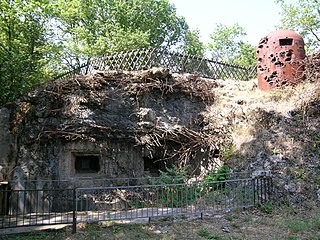 W
WOuvrage Bambesch is a lesser work of the Maginot Line. Located in the Fortified Sector of Faulquemont, the ouvrage consists of three infantry blocks, and is located between petits ouvrages Kerfent and Einseling, facing Germany. Completed in 1932, it is located in the Bois de Bambesch. On 20 June 1940 during the Battle of France, Bambesch was attacked by German forces, whose artillery battered the position, which could not be effectively supported by its neighbors, into surrender. Since 1973, Bambesch has been operated as a museum and is open to the public.
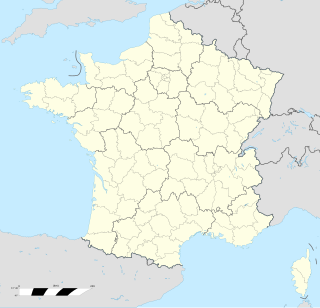 W
WOuvrage Barbonnet is a work of the Maginot Line's Alpine extension, the Alpine Line, also called the Little Maginot Line. The ouvrage consists of one entry block and one infantry block facing Italy. The ouvrage was built somewhat behind the main line of fortifications on the old Fort Suchet, which was already armed with two obsolete Mougin 155mm gun turrets.
 W
WThe Blockhaus d'Éperlecques is a Second World War bunker, now part of a museum, near Saint-Omer in the northern Pas-de-Calais département of France, and only some 14.4 kilometers north-northwest from the more developed La Coupole V-2 launch facility, in the same general area.
 W
WOuvrage Bois-du-Four is a lesser work in the Fortified Sector of the Crusnes of the Maginot Line. The ouvrage consists of a single large combat block without an underground gallery system, and is located between petit ouvrage Mauvais-Bois and gros ouvrage Bréhain, facing Luxembourg. A planned expansion, never carried out, was intended to enlarge Bois-du-Four into a fully equipped gros ouvrage. Bois-du-Four saw little action in either the Battle of France in 1940 or the Lorraine Campaign of 1944. It is preserved by the community of Villers-la-Montagne and may be visited.
 W
WOuvrage Bois- Karre is located in the Fortified Sector of Thionville of the Maginot Line, facing the France - Luxembourg border. The petit ouvrage is situated in the Cattenom Forest between the gros ouvrages Soetrich and Kobenbusch, just south of Boust. It is unusual for a Maginot fortification in its construction as a single blockhouse, with no underground gallery system or remotely located entries. Bois-Karre has been preserved and is maintained as a museum.
 W
WThe Fort de Bourlémont, or Fort Choiseul, was built between 1878 and 1881. The fort was built as part of the Séré de Rivières system of fortifications, which were conceived in response to the increasing power and range of artillery. The Fort de Bourlémont was part of the defenses of the Charmes Gap, in the town of Mont-lès-Neufchâteau, 3 kilometres (1.9 mi) west of Neufchâteau.
 W
WOuvrage Bousse, also known as Ouvrage Bois de Bousse, is a lesser work of the Maginot Line in the Fortified Sector of Boulay. The ouvrage is located between petit ouvrage Hobling and gros ouvrage Anzeling, near Hestroff in the Bois du Bousse, facing Germany. A small position, it was manned primarily by reservists. It is noted for the events of 15 June 1940, when it received orders to prepare for an evacuation as German forces advanced along the Line in the Battle of France. As the garrison prepared to abandon the position, sabotaging equipment, they destroyed their telephone connection, leaving them unable to receive the order countermanding the evacuation. The garrison was captured three days after leaving Bousse. Bousse is now managed as a museum and is open to public visitation.
 W
WOuvrage Bréhain is part of the Fortified Sector of the Crusnes of the Maginot Line, located near the community of Bréhain-la-Ville in the Meurthe-et-Moselle département of France. Bréhain is flanked by petits ouvrages Mauvais Bois and Aumetz. The gros ouvrage was equipped with long-range artillery, and faced the border with Luxembourg. It saw no major action in either the Battle of France in 1940 or the Lorraine Campaign of 1944. While not open to public visitation, it has been secured and is in relatively good condition when compared to other abandoned Maginot positions. A flanking casemate has been restored and may be visited.
 W
WOuvrage Cap Martin is a work of the Maginot Line's Alpine extension, the Alpine Line, also called the Little Maginot Line. The ouvrage, located on high ground in Roquebrune, consists of two artillery blocks and one combination block facing Italy. The ouvrage was at the southernmost end of the Alpine Line and overlooked the Mediterranean Sea coastline at an altitude of 21 meters between Nice and Menton, facing towards Italy. The ouvrage and its advance casemate at Pont Saint Louis controlled the coastal roads along the Mediterranean.
 W
WThe Centre d'histoire de la résistance et de la déportation is a museum in Lyon, France. Located on the former site of a French military health school and opened in 1992, it chronicles the French Resistance as well as Jewish deportation in World War II.
 W
WThe Centre de la mémoire d'Oradour has made it its mission to commemorate those slain by the 2nd armored division of the Waffen-SS "Das Reich" in Oradour-sur-Glane, to inform about the crime, and to act as a memorial for coming generations.
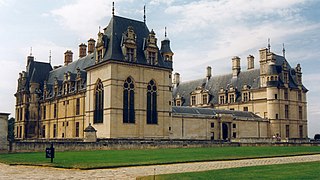 W
WThe Château d'Écouen is an historic château in the commune of Écouen, some 20 km north of Paris, France, and a notable example of French Renaissance architecture. Since 1975, it has housed the collections of the Musée national de la Renaissance.
 W
WThe Citadel of Besançon is a 17th-century fortress in Franche-Comté, France. It is one of the finest masterpieces of military architecture designed by Sébastien Le Prestre de Vauban. The Citadel occupies 11 hectares on Mount Saint-Etienne, one of the seven hills that protect Besançon, the capital of Franche-Comté. Mount Saint-Etienne occupies the neck of an oxbow formed by the river Doubs, giving the site a strategic importance that Julius Caesar recognised as early as 58 BC. The Citadel overlooks the old quarter of the city, which is located within the oxbow, and has views of the city and its surroundings.
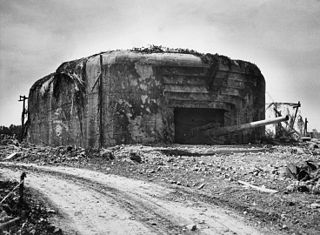 W
WThe Crisbecq Battery was a German World War II artillery battery constructed by the Todt Organization near the French village of Saint-Marcouf in the department of Manche in the north-east of Cotentin peninsula in Normandy. It formed a part of Nazi Germany's Atlantic Wall coastal fortifications. The main armament were three Czech 21 cm Kanone 39 canons, two of which housed in heavily fortified casemates up to 10 feet thick of concrete. The battery, with a range of 27–33 kilometers, could cover the beaches between Saint-Vaast-la-Hougue and Pointe du Hoc.
 W
WThe Fort des Dunes, also known as Fort Leffrinckoucke and sometime Fort de l'Est, is located in the commune of Leffrinckoucke, France, about 6 kilometres (3.7 mi) east of Dunkirk (Dunkerque). Built from 1878 to 1880, it is part of the Séré de Rivières system of fortifications that France built following the defeat of the Franco-Prussian War. Although it played no part in World War I, it had a significant role in both the beginning and end of World War II. It has been preserved and is interpreted by a local preservation association for the public.
 W
WThe Fort l'Écluse is close to the village of Collonges, Ain in Eastern France. It commands the Rhone valley and is a natural entrance into France from Switzerland between the Vuache hills and the Jura Mountains.
 W
WOuvrage Einseling is a lesser work of the Maginot Line. Located in the Fortified Sector of Faulquemont, the ouvrage consists of one infantry block, and is located between petits ouvrages Bambesch and Laudrefang, facing Germany. Einseling faced a determined German attack on 21 June 1940, during the Battle of France. Unlike its less fortunate neighbors to the west, Einseling was able to resist the attack with help from Laudrefang, its neighbor to the east. The ouvrage survives in a heavily battered state, with its lower levels flooded.
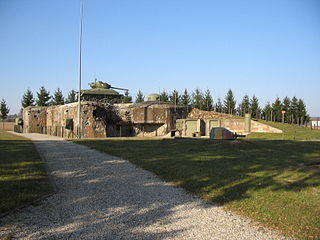 W
WThe Casemate d'Esch is a pre-World War II fortified position near the German frontier in extreme northeastern France. Built in 1931, the casemate was part of an extension of the Maginot Line fortifications along France's border with Germany. As a unit of the Fortified Sector of Haguenau, the casemate was part of French defenses during the Battle of France, but saw no combat in 1940. The area was the scene of intense fighting between German and American forces in 1945. The casemate with the marks of the 1945 combat has been preserved and is part of a museum associated with the nearby Ouvrage Schoenenbourg. The museum is located at the southeastern edge of the town of Hatten.
 W
WOuvrage Fermont is a gros ouvrage of the Maginot Line, part of the Fortified Sector of the Crusnes in northeastern France, near the community of Montigny-sur-Chiers. It is located near the commune of Montigny-sur-Chiers, between the petit ouvrage Ferme Chappy and the gros ouvrage Latiremont. The position is near the western end of the Line, about four kilometers east of Longuyon, facing Belgium. There was significant combat at Fermont during the last stages of the Battle of France. It was repaired and reactivated during the 1950s and 1960s as a strongpoint in the event of an invasion by Soviet forces. After being abandoned by the military, it has been restored and is maintained as a museum.
 W
WOuvrage La Ferté, also known as Ouvrage Villy-La Ferté, is a petit ouvrage of the Maginot Line, located in the Fortified Sector of Montmédy, facing Belgium. The ouvrage lies between the towns of Villy and La Ferté-sur-Chiers. It possesses two combat blocks linked by an underground gallery. The westernmost position in its sector, it was a comparatively weakly armed fortification in an exposed position that left it vulnerable to isolation and attack. After a sustained attack during the Battle of France the position was overwhelmed by German forces and was destroyed with its entire garrison killed. The fighting at La Ferté was the heaviest of any position in the Maginot Line. It is preserved as a war memorial.
 W
WOuvrage Four-à-Chaux is a gros ouvrage of the Maginot Line, located in the community of Lembach, France, in the Bas-Rhin département. Four à Chaux was adjoined by petit ouvrage Lembach and gros ouvrage Hochwald, and faced the German frontier as part of the Fortified Sector of the Vosges. A "four à chaux" is a lime kiln in French, and the ouvrage was located in the area of a limestone quarry and kiln, which operated until 1939. Four-à-Chaux was bombarded by the invading Germans in late June 1940 during the Battle of France with both aerial attacks and artillery bombardments. Four-à-Chaux survived to surrender at the end of the month. Block 1 was destroyed by the Germans before retreating in the face of American advances in 1945. During the 1950s Four-à-Chaux was renovated and reoccupied against a perceived threat from the Soviet Union. It fell out of use in the 1970s, and is now operated as a museum.
 W
WOuvrage Fressinéa, also known as Fraisinéa or Frassinéa is a lesser work of the Maginot Line's Alpine extension, the Alpine Line. The ouvrage consists of one entry block, one infantry block and one observation block at an altitude of 482 metres (1,581 ft). It is associated with the gros ouvrage of Rimplas, the first Maginot fortification to be constructed anywhere. Fressinéa was built between November 1930 and April 1934, accommodating 30 soldiers under a lieutenant with two months of provisions. The initial contractor was Pioljeux. Construction was finished by Thorrand et Cie for 1.7 million francs.
 W
WOuvrage Galgenberg forms a portion of the Fortified Sector of Thionville of the Maginot Line. It is situated in the Cattenom Forest, near the gros ouvrage Kobenbusch and petit ouvrage Oberheid. The ouvrage was tasked with controlling the Moselle valley and as such was called the "Guardian of the Moselle." Galgenberg did not see significant action in 1940 or 1944. After a period of reserve duty in the 1950s and 1960s it was deactivated. It is now a museum.
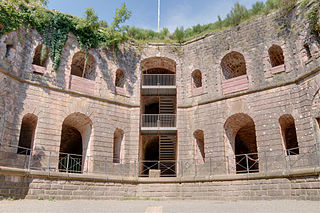 W
WFort de Giromagny, also known as Fort Dorsner, was built near Belfort in northeastern France between 1875 and 1879. The fort forms the southern end of the defensive curtain of the Haute Moselle Region, abutting the Fortified region of Belfort, which lies to its south. The Haute Moselle defenses form a link between the fortified encampments of Épinal and Belfort. The fort overlooks the main roads to the northeast of Belfort, which form a crossroads at Giromagny.
 W
WOuvrage Gondran is a lesser work of the Maginot Line's Alpine extension, the Alpine Line. The ouvrage consists of one entry block, one infantry block and one observation block. Gondran was commenced in June 1933, and was intended to cover the gap between Janus and Les Aittes. The site is close to two older forts, designated Gondran C and Gondran D. The Maginot fortification became known as Gondran E.
 W
WOuvrage Hackenberg, one of the largest of the Maginot Line fortifications, is part of the Fortified Sector of Boulay. It is situated twenty kilometres east of Thionville, in the Moselle département, near the village of Veckring, on the Hackenberg. It is located between gros ouvrage Billig and petit ouvrage Coucou, facing Germany. The fort occupies the wooded Hackenberg ridge. Before World War II it was considered a showpiece of French fortification technology, and was visited by British King George VI.
 W
WThe Fort d'Illange is a fortification located to the south of Thionville in the Moselle department of France. It was built by Germany next to the town of Illange in the early 20th century after the annexation of the Moselle following the Franco-Prussian War. The Fort d'Illange was part of the Moselstellung, a group of eleven fortresses surrounding Thionville and Metz to guard against the possibility of a French attack aimed at regaining Alsace and Lorraine, with construction taking place between 1905 and 1911. The fortification system incorporated new principles of defensive construction to deal with advances in artillery. Later forts, such as Illange, embodied innovative design concepts such as dispersal and concealment. These later forts were designed to support offensive operations, as an anchor for a pivoting move by German forces into France.
 W
WOuvrage Immerhof, also known as Ouvrage Ferme-Immerhof, is one of the largest petit ouvrages of the Maginot Line of northeast France. Located near the community of Hettange-Grande, it is 7 km north of Thionville between the gros ouvrages of Molvange and Soetrich, the closest ouvrage to the Luxembourg frontier. It was part of the Fortified Sector of Thionville, in the Fortified Region of Metz, the strongest portion of the Line. Apart from its function as a communication post between the neighbouring gros ouvrages, Immerhof also controlled the road and railway routes from Luxembourg, which pass in the immediate vicinity. In addition, Immerhof protected other Maginot works in the vicinity: the casemates of Kanfen, the infantry shelter of Stressling, the observation point and shelter of Hettange-Grande, and a number of nearby blockhouses constructed during the Phoney War.
 W
WOuvrage Janus is a work of the Maginot Line's Alpine extension, the Alpine Line, located to the east of Briançon on near the Col de Montgenèvre. The ouvrage consists of one entry block, two infantry blocks, two artillery blocks, two observation blocks and one combination block at an altitude of 2,540 metres (8,330 ft), the second highest fortification on the Alps in 1940. Built on the site of the old Fort Janus, it retained the old fort's 95mm naval guns and added two 75mm guns
 W
WThe Juno Beach Centre is a museum located in Courseulles-sur-Mer in the Calvados region of Normandy, France. It is situated immediately behind the beach codenamed Juno, the section of the Allied beachhead on which 14,000 Canadian troops landed on D-Day 6 June 1944.
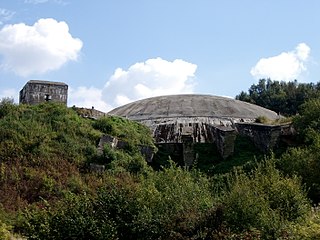 W
WLa Coupole, also known as the Coupole d'Helfaut-Wizernes and originally codenamed Bauvorhaben 21 or Schotterwerk Nordwest, is a Second World War bunker complex in the Pas-de-Calais department of northern France, about 5 kilometres (3.1 mi) from Saint-Omer, and some 14.4 kilometers south-southeast from the less developed Blockhaus d'Eperlecques V-2 launch installation in the same area. It was built by the forces of Nazi Germany between 1943 and 1944 to serve as a launch base for V-2 rockets directed against London and southern England, and is the earliest known precursor to modern underground missile silos still in existence.
 W
WOuvrage Les Aittes is a lesser work of the Maginot Line's Alpine extension, the Alpine Line. The ouvrage consists of one entry block, three infantry blocks and one observation block, about two kilometers east of Cervières, Hautes-Alpes at an altitude of 2,029 metres (6,657 ft)..
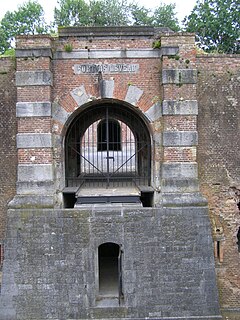 W
WThe Fort de Leveau, also known as Fort Schouller, is located in the commune of Feignies, France. It is part of the fortifications of Maubeuge, located to the northwest of the city, overlooking the railroad to Mons. The Séré de Rivières system fort was built 1882–1884, one of six forts built at the time. It is maintained as a museum by the town of Feignies.
 W
WThe Casemate de Marckolsheim Sud is a pre-World War II fortified position near the Rhine river in eastern France. The casemate was part of an extension of the Maginot Line fortifications along France's border with Germany. As a unit of the Fortified Sector of Colmar, the casemate was part of French defenses during the German assault of 15–18 June 1940, Operation Kleiner Bär. It has been preserved and is part of a museum focusing on the Rhine section of the Maginot Line. The museum is located at the eastern edge of the town of Marckolsheim.
 W
WThe Mémorial de Caen is a museum and war memorial in Caen, Normandy, France commemorating World War II and the Battle for Caen. More generally, the museum is dedicated to the history of the twentieth century, mainly focused on the fragility of peace. Its intention is "pay a tribute to the martyred city of the liberation" but also to tell "what was the terrible story of the 20th century in a spirit of reconciliation".
 W
WMémorial de la Shoah is the Holocaust museum in Paris, France. The memorial is in the district of Le Marais, in the third and fourth arrondissement, which had a large Jewish population at the beginning of World War II.
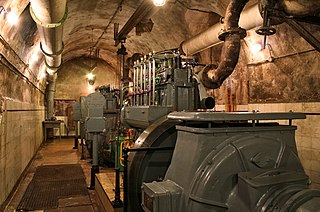 W
WOuvrage Michelsberg, one of the Maginot Line fortifications, formed part of the Fortified Sector of Boulay as well as the fortified region of Metz. The ouvrage is located in Moselle (département) between the towns of Dalstein and d'Ebersviller, about 23 km from Thionville. It is located between gros ouvrage Mont des Welches and petit ouvrage Hobling, facing Germany. Michelsberg did not see significant action in the Battle of France until June 1940, when it was attacked from the rear by German forces that had bypassed the Maginot Line. It successfully resisted these attacks, but was compelled to surrender in accordance with the 25 June 1940 armistice. After the Second World War it was renovated as a Cold War fortification against a potential Soviet invasion, then abandoned. It is now operated as a museum, and may be visited.
 W
WThe Fortress of Mimoyecques is the modern name for a Second World War underground military complex built by the forces of Nazi Germany between 1943 and 1944. It was intended to house a battery of V-3 cannons aimed at London, 165 kilometres (103 mi) away. Originally codenamed Wiese ("Meadow") or Bauvorhaben 711, it is located in the commune of Landrethun-le-Nord in the Pas-de-Calais region of northern France, near the hamlet of Mimoyecques about 20 kilometres (12 mi) from Boulogne-sur-Mer. It was constructed by a mostly German workforce recruited from major engineering and mining concerns, augmented by prisoner-of-war slave labour.
 W
WThe Musée des Blindés or Musée Général Estienne is a tank museum located in the Loire Valley of France, in the town of Saumur. It is now one of the world's largest tank museums. It began in 1977 under the leadership of Colonel Michel Aubry, who convinced both the French military hierarchy and the local political authorities. Started 43 years ago with only a few hundred tracked vehicles, it has become a world-class collection which attracts visitors interested in the history of multinational tank development as well as professional armor specialists. From the very beginning, Colonel Aubry had made it a key policy of the museum to restore to running condition as many historically or technically significant vehicles as was feasible.
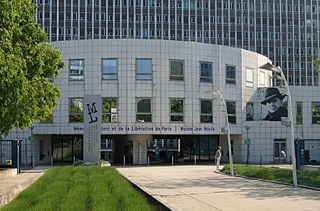 W
WThe Musée du Général Leclerc de Hauteclocque et de la Libération de Paris – Musée Jean Moulin is a museum located in the 15th arrondissement of Paris at 23, Allée de la 2e DB, Jardin Atlantique, Paris, France. It is open daily except Mondays; as of 2016 admission was free of charge.
 W
WThe Musée Pierre-Jost is situated near the Ouvrage Hochwald, one of the major fortifications of the Maginot Line in France, near to the village of Drachenbronn in the commune of Drachenbronn-Birlenbach, Alsace. It documents the story of the fortification before, during and after World War II.
 W
WThe Casemate d'Oberroedern Sud, also known as Casemate Reiffel and Oberroedern Est, is a pre-World War II fortified position near the Rhine river in eastern France. The casemate was part of an extension of the Maginot Line fortifications along France's border with Germany. As a unit of the Fortified Sector of Haguenau, the casemate was part of French defenses in June 1940. It has been preserved and is a component of a museum focusing on the Rhine section of the Maginot Line. The museum is located at the eastern edge of the town of Oberrœdern.
 W
WThe Fort de Queuleu is a fortification to the southeast of Metz, near Queuleu, France. Construction began while part of Lorraine was under French rule in 1868. After the interruption of the Franco-Prussian War of 1870-71, the fort was improved between 1872 and 1875 by the German Empire, which had conquered the area in the war. Renamed Fort Goeben, it formed part of the first ring of the fortifications of Metz. Functionally obsolete by the First World War, it saw no military action, but was used by the Germans as a detention center for members of the French Resistance during World War II.
 W
WThe Musée de la Résistance et de la Déportation de l’Isère is a museum located in Grenoble, France.
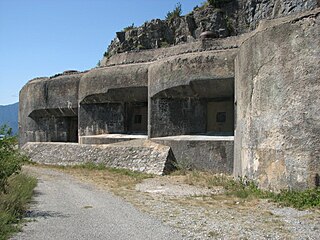 W
WOuvrage Rimplas is a work of the Maginot Line's Alpine extension, the Alpine Line, known also as the Little Maginot Line. The ouvrage consists of one entry block, two infantry blocks and three artillery blocks at an altitude of 986 metres (3,235 ft). It was the first ouvrage of any portion of the Maginot Line to be completed, in 1928. The ouvrage features an aerial tram entrance.
 W
WOuvrage Roche-la-Croix is a work of the Maginot Line's Alpine extension, the Alpine Line, also known as the Little Maginot Line. The ouvrage consists of one entry block, two infantry blocks, one artillery block and two observation blocks in the vicinity of the Col de Larche. An aerial tram was provided for better access. The position is located at the top of a sheer escarpment that dominates Meyronnes and the valley of the Ubayette.
 W
WOuvrage Rohrbach is a petit ouvrage of the Maginot Line located in the community of Bettvillier, near Rohrbach-lès-Bitche in the Moselle département, facing Germany. The Fortified Sector of Rohrbach was built somewhat later than its neighbors to the east and west, and in company with positions on the extreme western end of the Maginot Line, became one of the "New Fronts."
 W
WOuvrage Saint Ours Bas is a lesser work of the Maginot Line's Alpine extension, the Alpine Line. The ouvrage consists of one infantry block. The location is unusual on lacking the underground galleries typical of a Maginot fortification, making it more like a blockhouse than an ouvrage. It was armed with two machine gun cloches and three heavy twin machine guns and six light machine gun embrasures. The interior is laid out on two levels.
 W
WOuvrage Saint Ours Haut is a work of the Maginot Line's Alpine extension, the Alpine Line, also known as the Little Maginot Line. The ouvrage consists of one infantry block, one artillery block, two observation blocks and one combination block in the vicinity of the Col de Larche. It is located on the territory of the commune of Meyronnes. Construction began in March 1931, at a cost of 15.1 million francs.
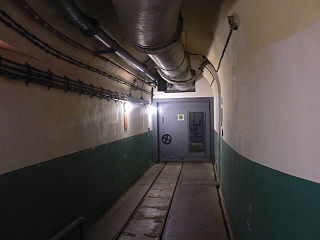 W
WOuvrage Saint-Gobain is a work of the Maginot Line's Alpine extension, the Alpine Line. The ouvrage consists of one entry block, one infantry block, one artillery block, one observation block and one combination block. Located in Modane, France, it is just across the valley of the Arc from Ouvrage Saint-Antoine and somewhat to the east of Ouvrage Sapey.
 W
WOuvrage Saint-Roch is a work of the Maginot Line's Alpine extension, the Alpine Line, also known as the Little Maginot Line. Small for a gros ouvrages, the ouvrage consists of one entry block, one artillery block and two observation blocks overlooking Sospel at an altitude of 426 metres (1,398 ft). The position is located just to the southwest of Sospel, its entrance block in a narrow valley and the artillery block on the other side of the ridge overlooking Sospel. The ouvrage is laid out along a single line, with the entry block to the rear, immediately followed by the usine, with barracks farther along and Blocks 2 and 3 at intervals. The position's main armament is concentrated in Block 4, a massive blockhouse designed to protect against rockfalls from higher up the mountain.
 W
WOuvrage Sainte-Agnès was a work of the Maginot Line's Alpine extension, the Alpine Line, also called the Little Maginot Line. The fortification was built between 1932 and 1938. The site is at the south edge of the hill town of Sainte-Agnès, Alpes-Maritimes at an elevation of 780 metres overlooking the Mediterranean Sea.
 W
WOuvrage La Salmagne is a petit ouvrage of the Maginot Line, built as part of the "New Fronts" program to address shortcomings in the Line's coverage of the border with Belgium. Like the other three ouvrages near Maubeuge, it is built on an old Séré de Rivières system fortification, near the town of Bersillies. The Ouvrage Bersillies is nearby to the northwest. La Salmagne has been preserved and is open to the public.
 W
WOuvrage Schoenenbourg is a Maginot Line fortification. It is located on the territory of the communes of Hunspach, Schœnenbourg and Ingolsheim, in the French département of Bas-Rhin, forming part of the Fortified Sector of Haguenau, facing Germany. At the east end of the Alsace portion of the Maginot Line, its neighbour is the gros ouvrage Hochwald. It is the largest such fortification open to the public in Alsace. Officially recorded as an historical monument, it retains all its original structural elements. Schoenenbourg was heavily bombarded during the Battle of France in 1940, receiving more enemy ordnance than any other position in France, with no significant damage. In 1945, retreating German troops used explosives to destroy much of the ouvrage. After the war it was fully repaired and placed back into service as part of a programme to use Maginot fortifications to resist a potential Warsaw Pact advance through Europe. By the 1970s the plan had lost favour and funding, and Schoenenboug was abandoned. In 1987 a local organisation undertook Schoenenbourg's preservation, and today it is open to public visitation.
 W
WThe Fort de Seclin, also known as Fort Duhoux, is located near the commune of Seclin, France, about 9.5 kilometres (5.9 mi) south of Lille. Built from 1873 to 1875, it is part of the Séré de Rivières system of fortifications that France built following the defeat of the Franco-Prussian War. It was never modernized to cope with improvements in artillery technology in the late 19th century. It has been preserved and is interpreted by a local preservation association for the public.
 W
WOuvrage Simserhof is a gros ouvrage of the Maginot Line, located in the French commune of Siersthal in the Moselle department. It faces the German border and is adjoined by the petit ouvrage Rohrbach and the gros ouvrage Schiesseck. Located 4 km west of Bitche, the ouvrage derived its name from a nearby farm. It was part of the Fortified Sector of Rohrbach. During the Battle of France in 1940, the Simserhof supported its neighboring fortifications with partially successful covering artillery fire. After the surrender of France, it was repurposed by the Germans as a torpedo storage depot, and later resisted the American advances of late 1944. The Americans briefly occupied the fort in the first days of 1945 until the German counter-offensive of Operation Nordwind, which allowed them to take back control of the Simserhof. The fort was finally liberated by the 100th Infantry Division on March 15, 1945. Following the war, it was initially repaired for the French Army and later converted into a Maginot Line museum in the early 1960s. Retained by the Ministry of Defense, Simserhof now functions as a museum, and has the most extensive visitor infrastructure of any of the preserved Maginot fortifications.
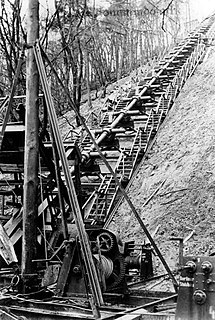 W
WThe V-3 was a German World War II large-caliber gun working on the multi-charge principle whereby secondary propellant charges are fired to add velocity to a projectile.
 W
WThe Casemate de Wittring is a component of the Maginot Line fortifications in northeastern France. It is located in the Fortified Sector of the Sarre section of the line and was associated with Ouvrage Haut-Poirier, a petit ouvrage of the main Line. Wittring has been restored and is operated as a museum.